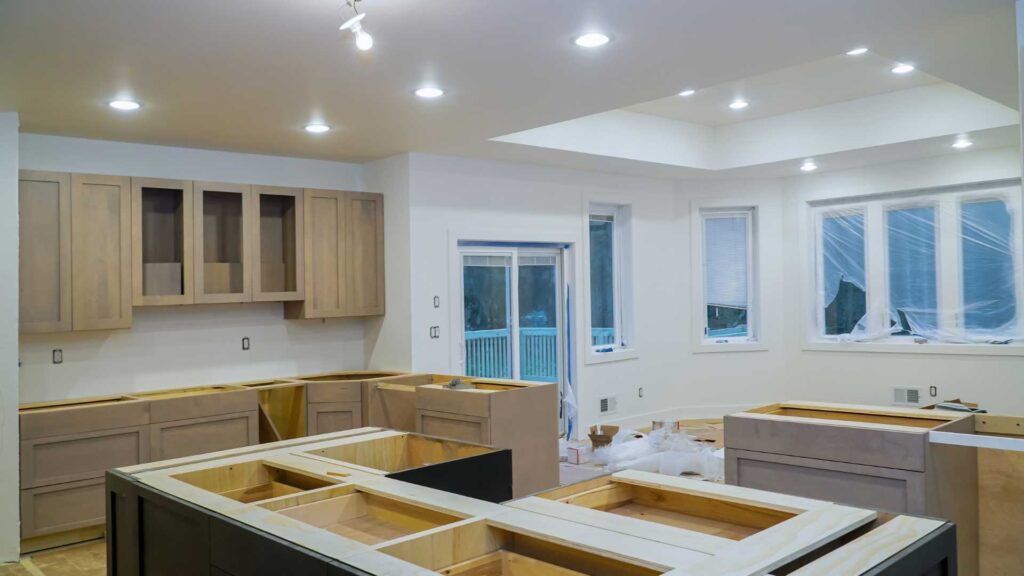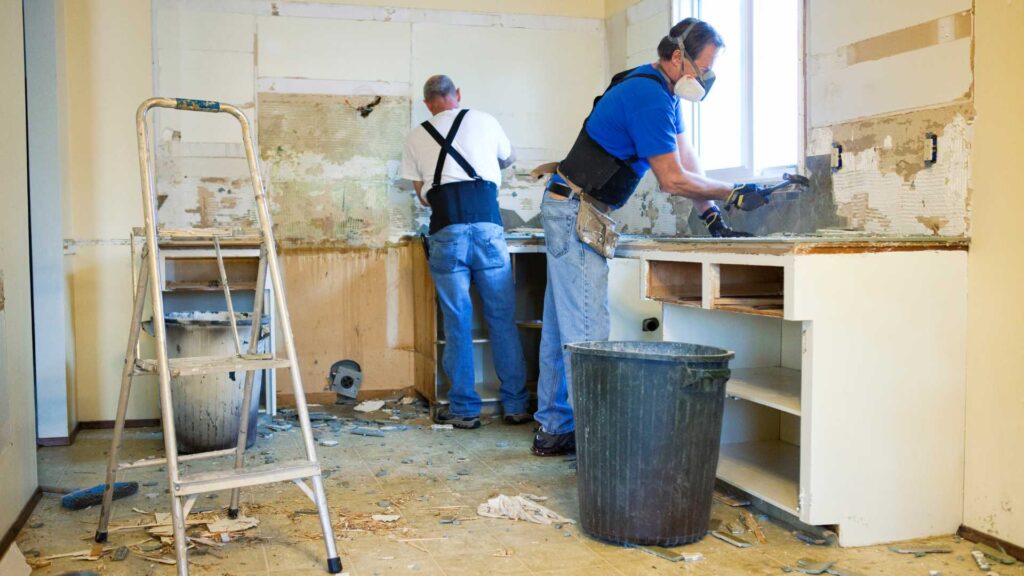Starting a kitchen makeover is an exciting adventure. that can dramatically transform the heart of your home. Whether you’re aiming to enhance the functionality of your space, update its aesthetic appeal, or increase the value of your property, understanding the most important steps in a kitchen renovation is crucial. The process involves planning, budgeting, and selecting the right materials and layout to ensure that the final result meets your needs and lifestyle.
From determining a sensible spending plan to selecting the perfect layout, each step plays a vital role in the success of your renovation. It’s about creating a beautiful space and making practical decisions that will stand the test, from determining a sensible spending plan to selecting and confidently navigating the complexities of a kitchen renovation, Creating a functional space that reflects your style.
Summary
A kitchen renovation can dramatically enhance your home’s functionality, style, and value. Assess your needs and set a realistic budget to ensure success, allowing for unexpected costs. Prioritise the kitchen layout that best suits your space, whether it’s L-shaped, U-shaped, galley, or island. Choose durable materials and finishes that match your aesthetic, and focus on energy-efficient, integrated appliances.
Employ certified experts for plumbing and electrical work. And ensure the layout accommodates enough power points and proper lighting. Custom cabinetry offers flexibility but at a higher cost, while pre-made options are more affordable. Maximise storage with smart solutions like pull-out drawers and corner units. Select durable flooring and a stylish backsplash to complement the overall design.
Understanding Your Needs And Setting A Budget
Assessing Your Needs
The first step in any kitchen renovation is to assess its functionality. Start by identifying what aspects of your kitchen work well and which areas need improvement. Consider how you use your kitchen daily. Do you need more bench space for cooking? Is storage a major concern? By clearly understanding your needs, you can prioritise the most important features for your renovation.
Setting A Realistic Budget
Once you have a clear idea of your needs, it’s time to establish a budget. Kitchen renovations can vary significantly, so setting a realistic budget is crucial. Consider all expenses, including materials, labour, and potential unexpected costs. A good rule of thumb is to set up an extra 10–20% of your spending for unanticipated expenses. This financial buffer will help you avoid surprises during the renovation.
Designing Your Kitchen Layout
Choosing The Best Layout
Your kitchen’s functionality is fundamentally dependent on its arrangement. Popular kitchen layouts include L-shaped, U-shaped, galley, and island kitchens. Each layout offers different benefits depending on the size and shape of your kitchen. For example, an L-shaped layout is ideal for smaller spaces, while an island kitchen provides additional counter space and seating options. Choose a layout that fits your space and enhances your workflow.
Selecting Materials And Finishes
Your choice of finishes and materials will greatly influence your kitchen’s overall look and durability. When selecting benchtops, cabinets, and flooring, consider aesthetics and practicality. Stone, engineered wood, and tiles are popular choices because they are low-maintenance and long-lasting. Make sure the finishes you select align with your desired style, whether modern, rustic, or traditional.
Incorporating Appliances
Choosing Energy-Efficient Appliances
Modern kitchen appliances are essential for a functional kitchen. When selecting appliances, focus on energy efficiency and functionality. Energy-efficient appliances not only lessen your impact on the environment but also cut your energy costs. Consider the placement of appliances like the fridge, oven, and dishwasher to ensure they fit seamlessly into your kitchen design and workflow.
Integrating Appliances Into Cabinetry
For a streamlined look, consider integrating your appliances into the cabinetry. Built-in appliances like fridges and dishwashers can create a cohesive and uncluttered appearance. This approach also maximises available space, making your kitchen more functional.
Planning Electrical And Plumbing Work
Hiring Qualified Professionals
Plumbing and electrical work are essential elements of a kitchen renovation. Hiring licensed professionals for these tasks is essential to ensure the work is done safely and up to code. A professional electrician will install lighting, power points, and appliances, while a plumber will take care of any necessary updates to your kitchen’s plumbing system.
Planning The Electrical Layout
Proper planning of your kitchen’s electrical layout is vital to its functionality. Ensure that there are enough power points for all your appliances, and consider installing task lighting in key areas, such as under cabinets and over the kitchen island. Proper lighting enhances both the functionality and ambience of your kitchen.
Updating Plumbing Systems
Updating the plumbing system will be necessary if your renovation involves relocating the sink, dishwasher, or fridge. This may involve rerouting pipes or installing new ones. Ensuring that your plumbing system is properly updated will prevent future problems, like leaks or poor water pressure.
Choosing Cabinetry And Storage Solutions
Custom Vs. Pre-Made Cabinetry
One of the major decisions during a kitchen renovation is choosing between custom and prefabricated cabinetry. Custom cabinetry allows for greater flexibility in design and fit, but it comes at a higher cost. Prefabricated cabinets are less expensive and can be installed quickly, though they may need to be more perfectly tailored to your space. To select the best option for your kitchen, take your needs and budget into account.
Maximising Storage Space
Storage is a key factor in a functional kitchen. To maximise storage, consider installing pull-out drawers, corner units, and overhead cabinets. Incorporating organisers within your cabinets and drawers can help keep your kitchen organised and clutter-free.
Selecting Flooring And Backsplash Materials
Choosing Durable Flooring
Your kitchen floor should complement the general decor, be easy to maintain, and be long-lasting. Popular choices include tiles, hardwood, and laminate flooring. Tiles are preferred due to their durability and water resistance, while hardwood offers warmth and a timeless aesthetic. Select flooring that complements your design and enhances the rest of your kitchen.
Designing A Functional And Stylish Backsplash
The kitchen backsplash has both practical and decorative value. It gives your kitchen design a beautiful touch while shielding your walls from spills and splashes. Consider materials like glass, ceramic tiles, or natural stone for your backsplash. These materials are easy to clean and add a touch of style to your kitchen.
Painting And Adding Finishing Touches
Selecting The Right Colours
Paint colours can significantly impact the overall atmosphere of your kitchen. Light colours make the space larger and more open, while darker shades add warmth and intimacy. When choosing a colour scheme, consider how it will complement your cabinetry, benchtops, and flooring. An accent wall can also be a great way to introduce a pop of colour and create a focal point in the room.
Finalising With The Right Finishing Touches
The finishing touches, such as handles, lighting fixtures, and accessories, play an essential role in tying your kitchen design together. Select fixtures that reflect your style, whether modern, classic, or something in between. Small details, like matching your handles with your tapware, can significantly enhance the overall aesthetic of your kitchen.
Installing And Inspecting The Completed Work
Coordinating The Installation Process
Coordination during the installation phase is critical to the success of your renovation. Your contractor will typically manage the installation schedule, ensuring that everything happens in the correct order. For example, flooring should be installed before cabinetry, and appliances should be fitted after the benchtops are in place. Proper coordination ensures that the renovation proceeds smoothly and efficiently.
Inspecting The Finished Kitchen
After the renovation, it’s essential to inspect the work thoroughly. Check for any defects or areas that need touch-ups. Ensure that all electrical and plumbing systems function correctly and that the finishes meet your expectations. This final inspection allows you to address issues before the project is officially completed.
Conclusion
A well-planned kitchen renovation can transform your space into a more functional and enjoyable part of your home. You can ensure a successful renovation by following these important steps, from assessing your needs and setting a budget to selecting materials and inspecting the finished work. Once your new kitchen is complete, Cooking, entertaining, and creating priceless memories with family and friends may be enjoyable activities in an area that suits your demands and conveys your flair.
Frequently Asked Questions
How Much Does A Kitchen Renovation Typically Cost?
The cost of a kitchen renovation can vary widely depending on the size of the kitchen, the materials used, and the project’s complexity. On average, a kitchen renovation might range from $15,000 to $50,000, but high-end renovations can go much higher.
How Long Does A Kitchen Renovation Take?
Depending on the scope of work, a kitchen renovation can take anywhere from 4 to 12 weeks. This includes design, planning, and the actual renovation process.
Do I Need To Hire A Designer For My Kitchen Renovation?
While not mandatory, hiring a kitchen designer can be highly beneficial. A professional can help optimise your space, ensure the design is functional and aesthetically pleasing, and prevent costly mistakes.
What Are The Most Important Features To Consider In A Kitchen Renovation?
Important features include the layout, storage solutions, countertop materials, cabinetry, appliances, and lighting. It is crucial to ensure that these elements meet your needs and style.
Do My Cabinets Need To Be Refaced Or Replaced?
If your cabinets are in good structural condition, refacing or painting them can be cost-effective. However, replacing them might be a better choice if they are outdated or damaged.



